Innovative Metal Art Materials and Projects
Abana Chapter
February 11, 2024
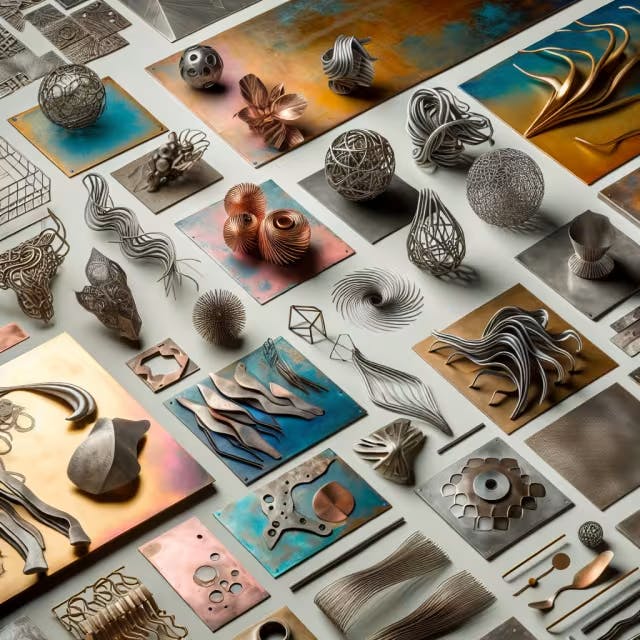
Embarking on a journey into the world of innovative metal art materials and projects unveils an exciting realm where creativity and craftsmanship converge. As enthusiasts and creators seek to push the boundaries of artistic expression, understanding the essentials of metal art, from materials to techniques, becomes vital. Whether you're a beginner curious about the foundational tools required or an experienced artist exploring advanced sculpting and finishing methods, this guide offers insights into transforming metal into stunning artwork, including incorporating recycled materials for an eco-friendly touch.
Key Takeaways
Innovative metal art materials offer a diverse range of options for artists to explore and express their creativity.
Beginners in metal art need to familiarize themselves with essential tools to start their projects successfully.
Understanding various metal sculpting techniques is crucial for advancing your skills and creating intricate artworks.
Applying professional finishing methods can significantly enhance the aesthetic appeal and durability of metal art pieces.
Incorporating recycled metal into artwork contributes to eco-friendly practices while adding a unique dimension to the creative process.
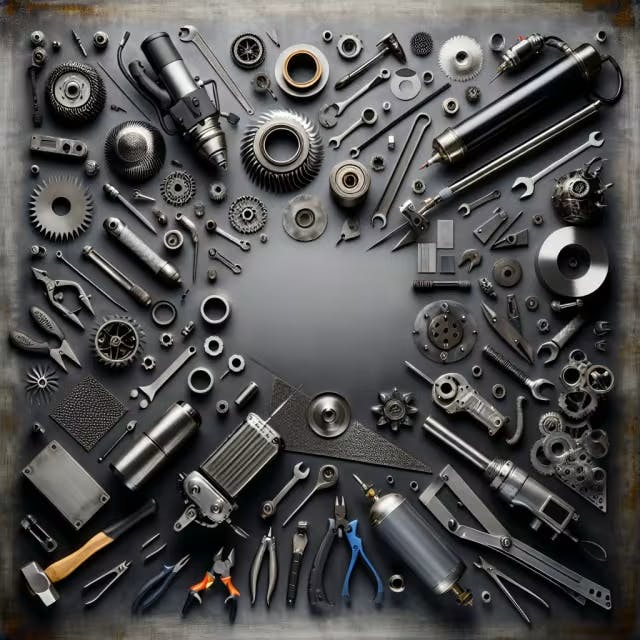
Exploring the World of Innovative Metal Art Materials
The realm of metal art is constantly evolving, offering artists new materials and innovative projects that push the boundaries of creativity. Among these materials, corten steel has emerged as a favorite due to its weathered appearance and durability, garnering interest for both outdoor sculptures and architectural elements. Another revolutionary material is titanium, prized for its strength, lightweight properties, and vibrant coloration when heat is applied, making it a top choice for jewelry and decorative pieces.
Material | Properties | Common Uses |
Corten Steel | Weather-resistant, durable | Outdoor sculptures, architectural details |
Titanium | Strong, lightweight, can be colorful | Jewelry, decorative items |
Artists are also exploring the recycling of metals, transforming scrap into striking art installations or functional pieces, highlighting sustainability. Cutting-edge techniques such as water jet cutting and laser engraving enable intricate designs and precision in metal art, expanding the possibilities for artists to experiment and innovate.
In recent projects, kinetic metal art has captivated audiences, where sculptures move, creating an interactive experience. This type of art combines mechanical engineering with artistic vision, offering spectators a dynamic and engaging viewing experience.
For more on the fascinating developments in metal art, including the use of unconventional materials and the rise of kinetic sculptures, explore this comprehensive guide here.
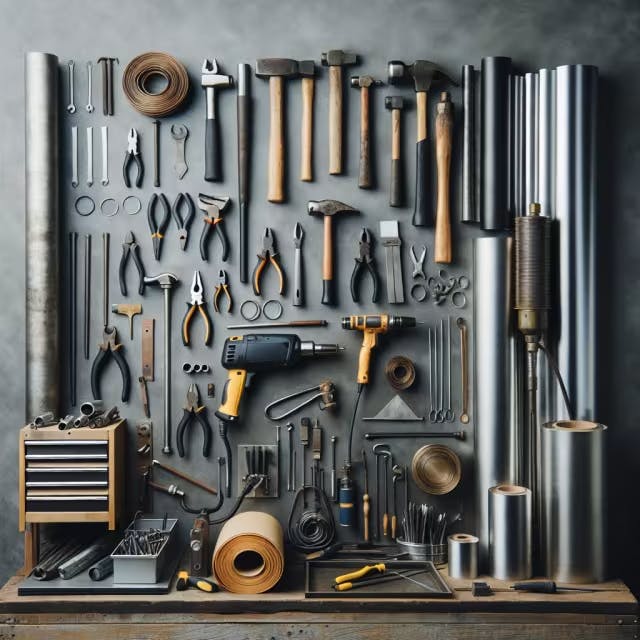
Essential Tools for Starting Your Metal Art Project
Starting a metal art project is an exciting venture, offering a unique medium to express creativity. However, having the right tools is crucial for both beginners and seasoned artists. Before delving into your next project, ensure these essential items are in your toolkit:
Safety Equipment: Metalworking can be hazardous, so safety gear, including gloves, goggles, and hearing protection, is non-negotiable.
Metal Sheets: The primary material for your artwork, available in various metals like copper, aluminum, and steel. Thickness and metal type depend on your project specifics.
Cutting Tools: Tools like shears, snips, and saws are vital for shaping and cutting metal sheets and wire.
Shaping Tools: Hammers, anvils, and mandrels help in bending and shaping the metal to your desired form.
Welding or Soldering Equipment: Depending on your project, you may need welding tools for joining metal parts or a soldering iron for finer work.
Finishing Tools: Files, sandpaper, and polishing equipment are essential for smoothing edges and adding shine to your completed piece.
Remember, quality tools can significantly impact the ease of your work and the final outcome. Investing in reliable equipment not only ensures better results but also enhances safety. For detailed reviews and suggestions on the best metalworking tools, considering specific project requirements, visit this comprehensive guide.
This list will set the foundation for your metal art projects, allowing you to explore this versatile medium with confidence and safety.
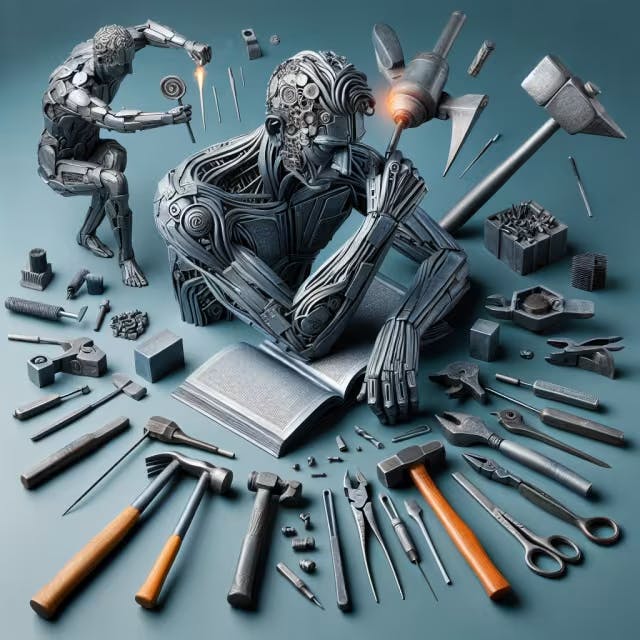
The Fascinating Techniques in Metal Sculpting
Metal art has evolved significantly, incorporating a mix of traditional techniques and innovative approaches. Artists now blend welding, forging, and sculpting to create stunning pieces that reflect both modern aesthetics and timeless craftsmanship. Key techniques include plasma cutting for precise designs and metal casting for intricate details. This blend of art and technology results in unique sculptures and functional art pieces that captivate and inspire.
Innovative projects often involve repurposing metal items, turning everyday objects into art. For instance, old tools, car parts, and scrap metal find new life as part of a larger sculpture, demonstrating sustainability in art.
For inspiration, consider exploring the work of artists who specialize in metal art. Their projects often showcase the versatility of metal as a material, whether in delicate jewelry pieces or large outdoor installations.
Technique | Description | Example Projects |
Welding | Joining metal parts with heat | Sculptures, furniture |
Plasma Cutting | Cutting precise shapes with a plasma torch | Wall art, custom signs |
Metal Casting | Pouring molten metal into molds | Statues, decorative elements |
Forging | Shaping metal through heating and hammering | Handcrafted tools, unique accessories |
These techniques offer a window into the boundless possibilities of metal art, inviting both artists and enthusiasts to explore the medium further.
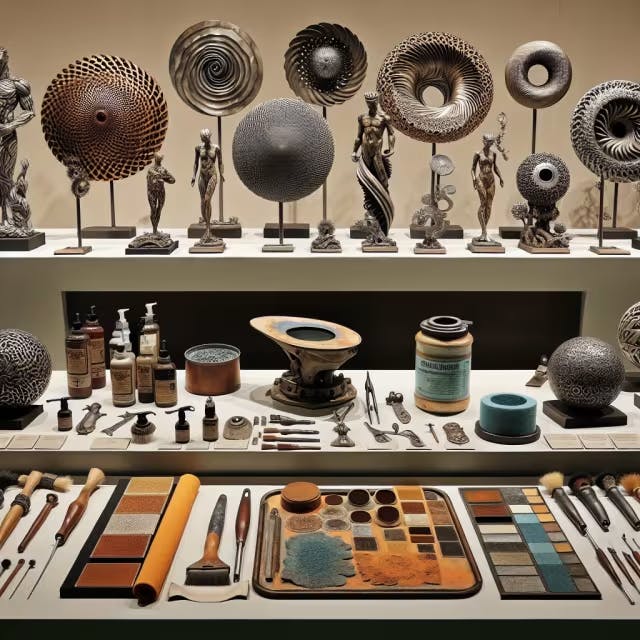
Metal Art Finishing Methods for a Professional Touch
To elevate the aesthetic of metal art, diverse finishing methods can be applied, each offering a unique texture or sheen, enhancing the visual impact and protecting the creation from environmental elements. Key techniques include:
Powder Coating: This dry finishing process involves applying a powdered paint to the metal surface, which is then cured under heat to form a skin-like layer. The method is favored for its durability, resistance to chipping, fading, and scratching, and is available in a myriad of colors.
Patination: By applying chemical solutions to metal, artists can induce a patina, a surface change leading to an array of colors and textures. This method is often used to give new metalwork an antique or weathered look.
Metal Plating: This involves coating the metal with a thin layer of another metal such as gold, silver, or nickel through electroplating or other processes. It not only changes the appearance but can also increase resistance to corrosion.
Polishing: A high gloss, mirrored finish can be achieved through polishing, which removes imperfections from the metal's surface using abrasive materials. This technique is perfect for creating a sleek, modern aesthetic.
Each method has its unique benefits and applications, and choosing the right one depends on the desired outcome of the metal art project. For a comprehensive look at how these and other finishing methods can transform metal art, including innovative metal art materials and projects, delve into the resources provided here.
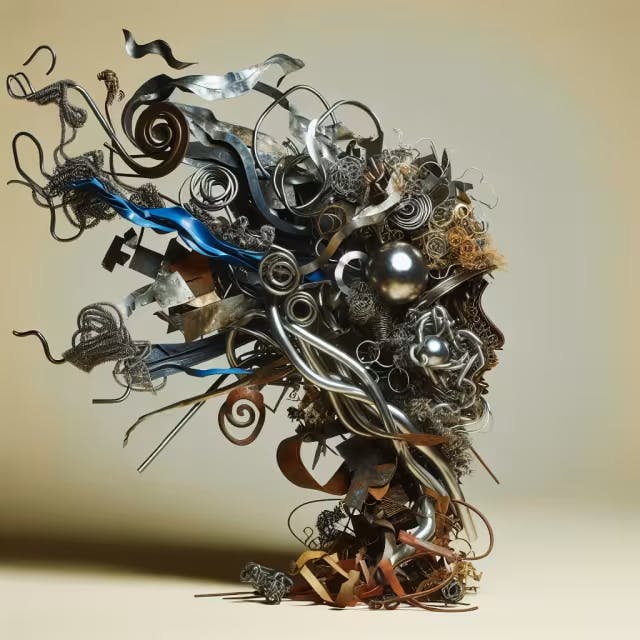
Incorporating Recycled Metal into Your Artwork
Recycled metal offers a unique and eco-friendly option for artists looking to push the boundaries of conventional materials. Utilizing scraps from industry or repurposed items, creators can forge pieces that not only exhibit aesthetic beauty but also convey messages about sustainability and innovation.
Popular Recycled Metals for Art:
Steel: Versatile and sturdy, ideal for both indoor and outdoor sculptures.
Aluminum: Lightweight and resistant to corrosion, perfect for delicate pieces.
Copper: Known for its malleability and stunning patina that evolves over time.
Brass: A blend of copper and zinc that provides a golden hue, great for intricate details.
Creative Project Ideas:
Sculptures: From abstract forms to realistic figures, the strength of metal allows for impressive structural integrity.
Wall Art: Use metal sheets or smaller pieces to create textured compositions that play with light and shadow.
Jewelry: Small, detailed works can transform recycled metal into wearable art, highlighting its versatility.
Functional Art: Think outside the box by crafting furniture, lighting fixtures, or decorative items that serve a purpose while showcasing metal's beauty.
Embracing recycled metal in art not only supports environmental efforts by reducing waste but also challenges artists to explore the material's full potential. Its adaptability and durability make it an excellent choice for a wide range of projects, ensuring that each creation stands out with its own unique story and impact. As we delve into the world of innovative metal art materials and projects, it's clear that the fusion of modern techniques, sustainable practices, and advanced materials like corten steel and titanium is reshaping the landscape of metal art. From utilizing recycled materials to adopting cutting-edge sculpting and finishing methods, artists are not only pushing the boundaries of creativity but also emphasizing sustainability. This evolving art form offers endless possibilities for both new and experienced artists to explore, ensuring that the realm of metal art continues to thrive and inspire.
Frequently Asked Questions
What are the unique properties of corten steel and titanium that make them ideal for metal art?
Corten steel and titanium each possess distinct properties that make them widely embraced in the realm of metal art. Corten steel is cherished for its weather-resistant qualities and robust nature, allowing it to withstand harsh outdoor conditions without deteriorating, thus ideal for creating long-lasting outdoor sculptures and architectural features. Its unique weathered appearance offers a visually striking rust-like aesthetic that evolves over time, adding character and depth to the art pieces. On the other hand, titanium stands out for its exceptional strength, coupled with being impressively lightweight, making it a preferred material for intricate jewelry and decorative items. Additionally, titanium's ability to exhibit vibrant colors when heated introduces a dynamic range of aesthetic possibilities for artists, enabling the creation of visually captivating pieces that combine durability with stunning coloration. Together, these materials offer versatility, durability, and a unique palette of visual effects that artists can leverage to push the boundaries of metal art.
How can recycled metals transform into striking art installations or functional pieces?
Recycled metal offers a unique and eco-friendly option for artists looking to push the boundaries of conventional materials. Utilizing scraps from industry or repurposed items, creators can forge pieces that not only exhibit aesthetic beauty but also convey messages about sustainability and innovation.
Creative Project Ideas:
Sculptures: From abstract forms to realistic figures, the strength of metal allows for impressive structural integrity.
Wall Art: Use metal sheets or smaller pieces to create textured compositions that play with light and shadow.
Jewelry: Small, detailed works can transform recycled metal into wearable art, highlighting its versatility.
Functional Art: Think outside the box by crafting furniture, lighting fixtures, or decorative items that serve a purpose while showcasing metal's beauty.
Embracing recycled metal in art not only supports environmental efforts by reducing waste but also challenges artists to explore the material's full potential. Its adaptability and durability make it an excellent choice for a wide range of projects, ensuring that each creation stands out with its own unique story and impact.
What cutting-edge techniques are expanding the possibilities for metal art projects?
Cutting-edge techniques expanding possibilities in metal art projects include:
Water Jet Cutting: Allows for precise cuts and intricate designs, offering artists the flexibility to work with a variety of metal thicknesses and types.
Laser Engraving: Provides the ability to add detailed textures, patterns, or writings to metal surfaces, enhancing the visual and tactile appeal of the artwork.
Recycling of Metals: Artists are creatively repurposing scrap metal into striking art installations or functional pieces, emphasizing sustainability.
Kinetic Metal Art: Engages viewers by incorporating movement into sculptures, creating an interactive experience that blends mechanical engineering with artistic vision. These innovative approaches, coupled with the use of unique materials like corten steel and titanium, are pushing the boundaries of metal art, allowing for the exploration of new techniques and expressions.
What essential tools do beginners need to start a metal art project?
For beginners venturing into metal art, a selection of basic tools and materials is essential to start creating stunning projects. Safety equipment including gloves, goggles, and hearing protection are paramount to ensure safe work practices. A variety of metal sheets, such as corten steel for its weather-resistant properties and titanium for its lightweight and colourful potential when heated, serve as the canvas for your creativity. Basic cutting tools like shears and snips, and shaping tools such as hammers and anvils, help in manipulating these metals into your desired forms. For joining pieces, welding or soldering equipment is necessary, depending on the intricacy and size of the project. Lastly, finishing tools like files and sandpaper are crucial for refining and polishing your artwork. This toolkit not only facilitates the exploration of traditional metalworking techniques but also supports innovative approaches, including working with recycled metals and employing cutting-edge methods like laser engraving for detailed designs.
How do innovative metal art materials and projects incorporate kinetic sculptures for a dynamic viewing experience?
Innovative metal art materials like corten steel, known for its weathered appearance and durability, and titanium, prized for its vibrant coloration when heat is applied, have reshaped the creation of dynamic kinetic sculptures. These materials allow for the construction of outdoor sculptures and intricate, colorful decorative items that move, engaging the audience with an interactive experience. By incorporating cutting-edge techniques such as water jet cutting for precision and embracing the recycling of metals for sustainability, artists can create kinetic sculptures that blend mechanical engineering with creative vision. This fusion of traditional and innovative approaches results in sculptures that offer spectators a captivating, dynamic viewing experience, further pushing the boundaries of art and technology.
What finishing methods can elevate the aesthetic and durability of metal art creations?
To elevate the aesthetic and durability of metal art creations, several finishing methods can be utilized:
Powder Coating: Offers a durable, protective layer available in various colors, ideal for both visual appeal and resistance to environmental damage.
Patination: Chemical solutions create diverse colors and textures on metal surfaces, giving artworks a distinctive, aged appearance.
Metal Plating: Enhances aesthetic value by adding a layer of another metal, like gold or nickel, which can also increase corrosion resistance.
Polishing: Achieves a high gloss, mirrored finish that removes surface imperfections, perfect for a sleek, modern look.
These methods not only improve the visual impact of metal art but also contribute to its longevity and resistance to wear.


